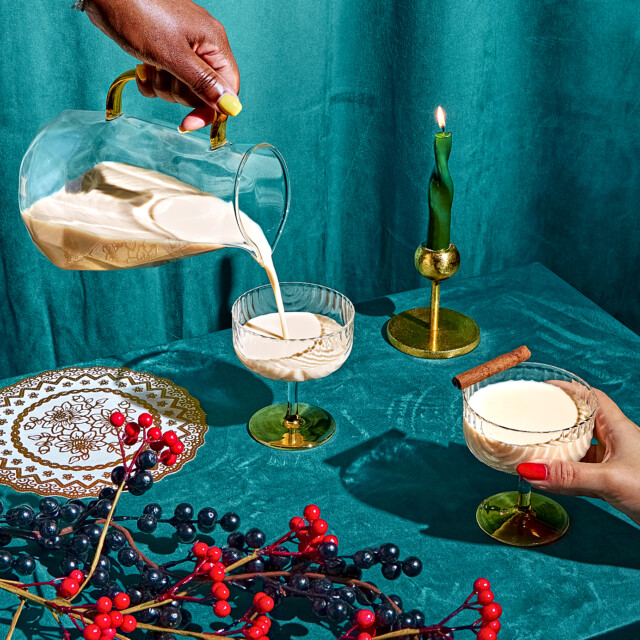My parents divorced when I was five years old, so I didn’t get to have the most intimate relationship with my Haitian culture for most of my adolescent years. Now that I’m older and have had the ability to reconnect with my paternal side, I’ve come to experience some of the most delicious facets of the Haitian holiday season. One of those is Independence Day pumpkin soup, and another is cremas.
What is cremas? I like to describe it as a Haitian Bailey’s to those who are unfamiliar, but it’s so much more than that. The spiced cream-based liquor, typically served during times of celebration, is flavored with some of Caribbean cuisine’s most iconic ingredients: nutmeg, clove, cinnamon, vanilla, and hand-grated coconut. Texturally, cremas is always smooth and rich, but can vary in thickness depending on the maker’s preference.
“In Haiti, cremas is something that is passed down from generation to generation,” said Myriam Jean-Baptiste, CEO and co-founder of cremas-inspired liqueur brand LS Cream Liqueur. She and her husband Steven Charles are both Haitian, so they have deep ties to the beverage. “It’s something that we grew up with, and there’s always a homemade bottle during the holidays,” she says.
At its root, cremas isn’t technically specific to Haiti. Most nations in the Caribbean have their own version of cream-based liquor, many of which are also consumed during the holiday season.
“Puerto Rico has Coquito, Jamaica has rum cream, Haitians have cremas, Venezuelans have a version called ponche crema,” Jean-Baptiste says. While the base flavors in cremas remain the same across Haiti, there are some regionally specific additions that those who want to make cremas can add. Many recipes involve infusing a mix of creams and milks with aromatics and spices on a stovetop or combining everything in a blender. After the ingredients are integrated — and chilled, depending if you used the stove or not — you can add your spirit of choice, but clairin (a sugar cane-based distilled alcohol) or Barbancourt rum are traditional.
“Some people put dried raisins in their cremas, or pistachios, or even mangoes. It is mostly based on your personal taste, though,” Jean-Baptiste says. Because every homemade bottle of cremas is so individual, some families can have multiple cremas recipes, which can lead to friendly competition during the holidays — not unlike Italian grandmothers arguing over whose sauce is the sauce, or the never-ending wars over the superior jollof rice.
For LS Cream Liqueur’s founders, what started out as a gift for holiday parties eventually grew into a full-scale business after they were asked by numerous friends and acquaintances for bottles of cremas. When it came time to decide which family recipe to run with and mass-produce as LS Cream’s flagship, the founders chose Steven’s grandmother’s iteration.
“Her daughters [Steven’s aunts] were passing their mother’s recipe around during the holidays. and we decided to use that recipe to share a little piece of our heritage with the world,” Jean-Baptiste says. While traditional cremas is generally thicker and usually consumed on its own, LS Cream Liqueur is made with a looser texture so it can be mixed into cocktails.
So, if you’re looking for something to spice up your holiday menu or want to switch out your standard eggnog this holiday season, give cremas a try.
